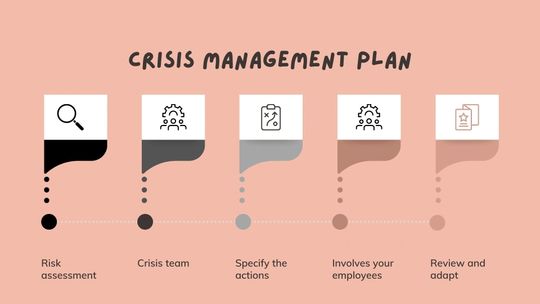
The health of your company can be disrupted in many ways, including reputation issues, negative financial impacts, employee harm, and damages to operations. But if you have a plan for continuing your operation, you can regain your footing.
Crises are unexpected by nature and can quickly change many aspects of the human experience. For example, the COVID-19 pandemic has upended several massive industries, including hospitality, travel, and event management, consequently causing downturns in the global economy.
Last week we talk about the importance of having a business plan when you start developing your business idea. And, as a business owner, you don’t start a business thinking about a crisis. The prime objective is to build a product that exceeds all expectations and thrives in its industry. However, being well-prepared is better than being taken by surprise. Therefore, we are sharing with you some tips to prepare a crisis management plan:

1. Risk assessment
Firstly, you need to identify real threats that can harm your company’s stability, whether they are natural disasters, reputational crises or negative financial impacts.
2. Crisis team
Once you have identified what kinds of disasters could befall your business. You should designate a crisis leader and a crisis team. The leader must have absolute authority to tell people what to do and when to do it. The plan should also include what are the leader’s priorities.
The crisis leader can’t work alone, so your crisis plan should also designate a crisis team that will relay the leader’s directives to the other employees. Try to assign crisis response roles to team members who are in different areas of your company and evaluate them based on how they respond to problem-solving.
3. Specify the actions you can take to respond to each crisis
Once you have localized the real threats that can affect your company and your designated team it’s time to lay out the actions associated with each potential business crisis. Describe these actions as much as possible, the steps, resources and employees involved.
4. Take care of your employees
Don’t just send out an email with the documented crisis management plan. Take the time to talk with them, and make them feel part of the process. Organize team meetings where leaders and managers can educate their teams on what their roles are in each crisis. They can walk them through the crisis management process and field any questions employees might have.
5. Review, adapt and start again
A crisis management plan is a live project. You want to continually test and review your crisis management plan over time, especially as your team adopts new technologies and internal processes change. Any time you identify a potential risk you need to update your plan.
Whatever the opportunity or challenge your business is facing today, we can provide expert advice focused on getting you the results you’ve set for your business. Contact us if you don’t know where to start with your crisis management plan.




